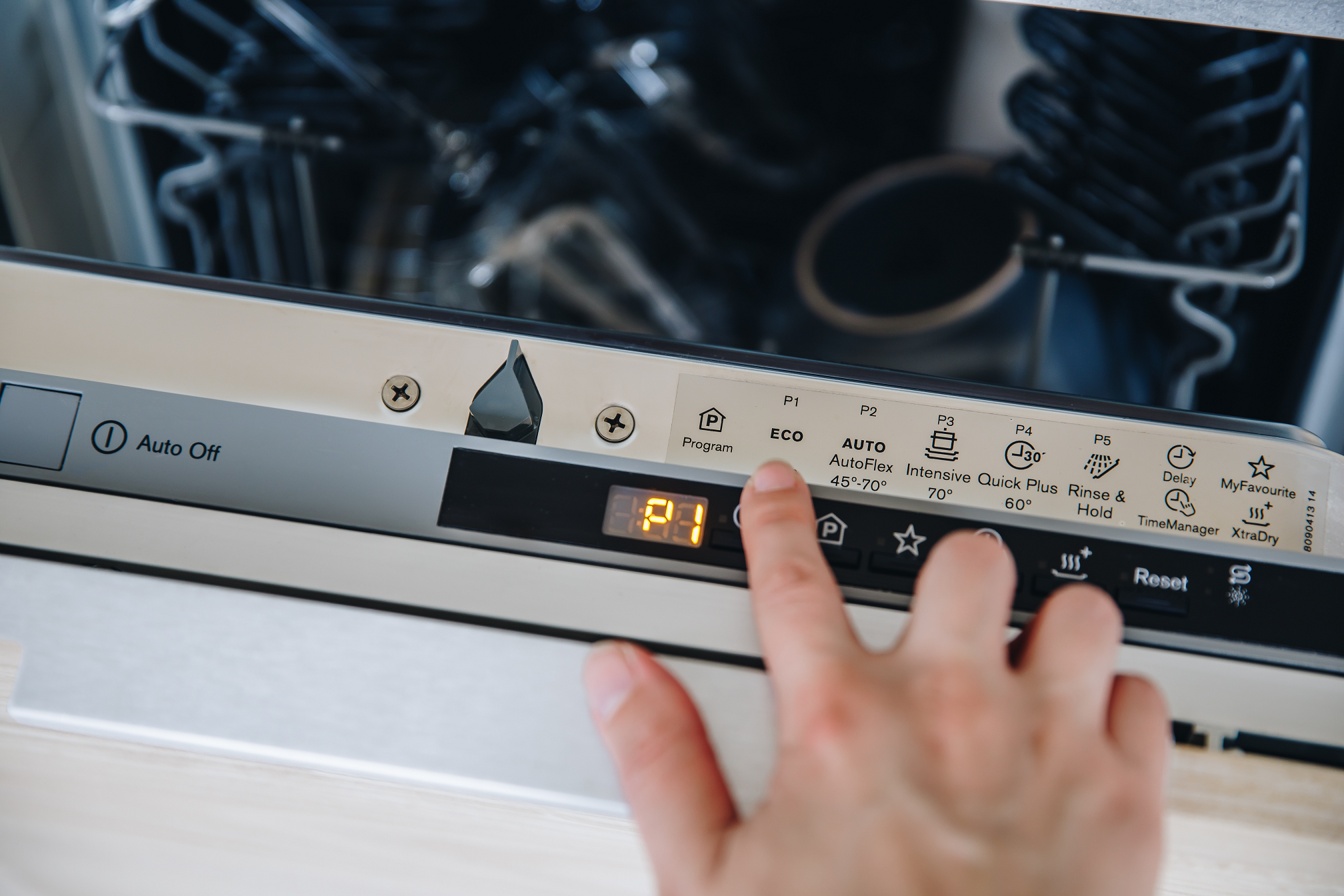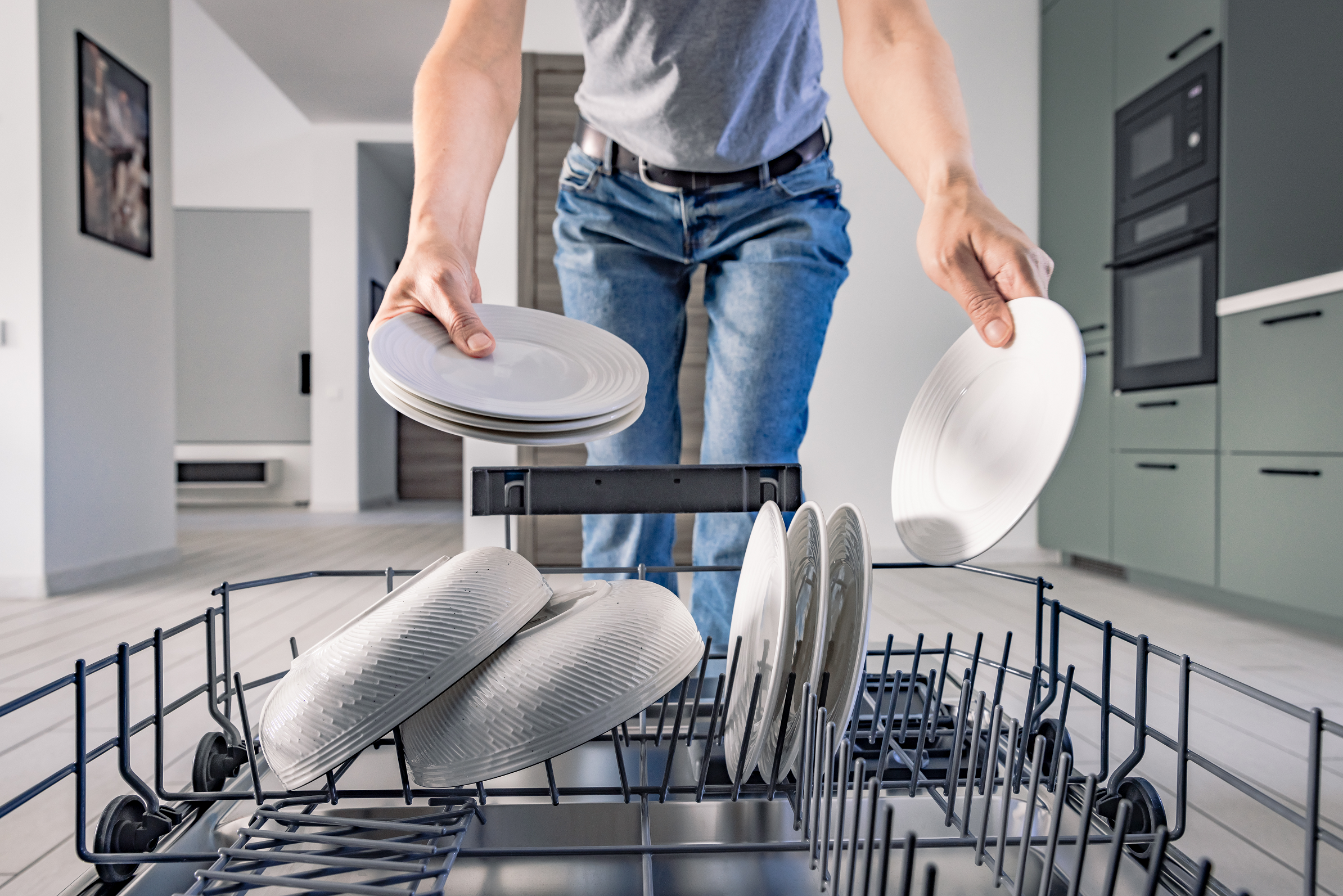How Does a Portable Dishwasher Work?

Portable dishwashers are a fantastic solution for those living in small spaces or lacking a built-in dishwasher. Designed to offer the same cleaning efficiency as a full-size, built-in unit, portable dishwashers add the benefit of flexibility and portability. Here’s an in-depth look at their basic functions and how they can make life easier.
KEY TAKEAWAYS
- Portable dishwashers are designed for easy setup, connecting directly to your kitchen faucet and using a standard power outlet. Their mobility and compact size make them ideal for small spaces, apartments, or those without built-in dishwasher options.
- With multiple wash cycles—including heavy, normal, quick, and eco—portable dishwashers offer flexibility to handle various dishwashing needs efficiently. They also come with built-in rinse aid and detergent dispensers, ensuring thorough cleaning and sparkling dishes.
- These compact dishwashers are energy-efficient and often use less water compared to handwashing, making them a sustainable choice. They incorporate features like water heating, filtration, and low-noise operation, adding convenience and value to compact living spaces.
Basic Portable Dishwasher Functions
Portable dishwashers are typically smaller than built-in dishwashers but many of their functions are the same except for water supply and drain connections.
How to Set Up a Portable Dishwasher for Use
To use a portable dishwasher, you typically connect the fill hose to your kitchen faucet using an adapter, eliminating the need for a directly and permanently connected water line. The drain line is often coupled to the fill line so dishwasher drain water goes down through the kitchen sink drain.
Once the dishwasher fill and drain lines are set up, you can plug the power cord into a standard power outlet, load the dishes, add detergent and start the cycle.
The setup is simple and takes only a few minutes, allowing you to use the dishwasher only when needed and to store it out of sight at other times.
Basic Dishwashing Cycle Operation
Here’s a general description of cycle operations in a portable dishwasher.
- Portable dishwashers start by opening the water valve and filling the tub with water. The heating element heats the water if needed.
- The circulation pump pushes water through the spray arms to clean the dishes.
- The detergent dispenser opens to release detergent during the wash cycle.
- After the wash cycle, the drain pump sends dirty drain water through the kitchen sink drain.
- The water fill valve again opens and fills the tub with clean rinse water and heats the water if needed.
- The rinse aid dispenser releases rinse aid into the clean water.
- The circulation pump pushes clean rinse water through the spray arms to rinse detergent and debris or grit from the dishes.
- The drain pump pushes dirty rinse water through the kitchen sink drain.
- The heating element turns on to dry the dishes. Some models also use a fan to help dry the dishes.
Most portable dishwashers have a clean light that turns on when the cycle is complete so that you can unload the dishwasher and store it until needed again.
Common Portable Dishwasher Features
Portable dishwashers typically include these features.
Easy Setup and Portability
Portable dishwashers are designed for maximum convenience. Unlike traditional dishwashers, they don’t require permanent installation. Most models come with wheels for easy mobility, allowing you to move the appliance into place when needed and store it when not in use. This makes portable dishwashers ideal for apartments, small kitchens, or even office spaces.

Basic and Specialized Wash Cycles
Portable dishwashers offer similar wash cycles to traditional models, enabling you to choose the best cleaning option for your dishes. Common cycle options include:
- Normal Cycle: Ideal for everyday dish loads, providing efficient cleaning without requiring additional settings.
- Heavy Cycle: Suited for pots, pans, and heavily soiled dishes; this cycle uses more water and a longer wash time to break down stubborn food residues.
- Quick or Light Cycle: A faster wash for lightly soiled dishes, reducing both water and energy consumption.
- Eco or Energy-Saver Cycle: Prioritizes water and energy efficiency, using a lower temperature and less water, making it a good choice for lightly soiled dishes.
Some models also include a Delay Start feature, allowing you to schedule the wash cycle for later, so you can take advantage of off-peak electricity rates or have clean dishes ready at a specific time.
Water Heating System
Portable dishwashers are equipped with an internal water heating system. This feature is essential for reaching the high temperatures needed to sanitize dishes effectively, which is especially important for households with young children or for cleaning items used with raw meat.
The heating element raises the temperature of the incoming water (often from the kitchen tap) to optimal levels for cleaning and sanitation. The result is a deep clean that removes bacteria and food residues effectively, leaving dishes sanitized and spotless.
Built-in Rinse Aid and Detergent Dispensers
Just like a traditional dishwasher, a portable unit includes compartments for detergent and rinse aid. These compartments are usually located on the inside of the dishwasher door.
Adding detergent ensures that dishes are thoroughly cleaned, while rinse aid helps prevent water spots, ensuring glasses and dishes come out sparkling.
Portable dishwashers are compatible with most standard dishwasher detergents, whether in powder, gel, or pod form.
Efficient Filtration System
To ensure that food particles don’t get redeposited on your clean dishes, portable dishwashers come equipped with a filtration system. These filters trap food debris, preventing them from clogging the drainage system and maintaining the dishwasher's efficiency over time. Some models have self-cleaning filters, while others require periodic cleaning.

Adjustable Racks and Storage Flexibility
Some portable dishwashers typically have adjustable racks to maximize space and allow for a variety of dish types. These racks can hold plates, bowls, cups, and even larger cookware, depending on how you arrange them.
Certain models also have foldable tines or removable racks to provide more room for larger items, making it possible to wash pots and pans in a compact appliance.
Drainage System
The drain pump in a portable dishwasher is basically the same as a built-in dishwasher but a portable dishwasher uses a drain hose that conveniently sends water through your kitchen sink to drain wastewater during the cycle. This drain hose is typically part of the same setup used to connect the unit to your kitchen sink faucet.
After the wash cycle completes, the drain pump pushes wastewater out through this hose and down the sink, allowing the dishwasher to efficiently handle waste without needing a dedicated plumbing setup.
Energy and Water Efficiency
Though smaller in size, portable dishwashers are often built to be energy and water-efficient. They’re a great option for eco-conscious households, as they use significantly less water compared to handwashing, particularly if you’re washing full loads. Additionally, their compact design and specialized cycles mean that they consume less electricity, which can lead to savings on utility bills over time.
Low Noise Operation
Most modern portable dishwashers are designed to run quietly, making them a suitable addition to small spaces. Noise levels vary between models, but many portable dishwashers now include soundproofing technology that reduces operational noise, allowing them to run discreetly in the background.
Maintenance and Cleaning
Maintaining a portable dishwasher is straightforward. Regularly wiping down the interior and exterior, as well as occasionally cleaning the filter, will help extend its lifespan.
Some models come with a self-cleaning feature or a specific cleaning cycle that removes buildup inside the machine, reducing the need for manual cleaning.
Using a dishwasher cleaner such as Affresh or Dishwasher Magic will help eliminate hard water deposits and other debris from filters and the dishwasher tub so your dishwasher will work more efficiently.
Schedule professional dishwasher maintenance yearly to keep your portable dishwasher in top shape and lasting longer. During maintenance service, the technician will check all components and functions of the dishwasher to make sure it’s operating efficiently.
Whenever you detect problems with your portable dishwasher, schedule dishwasher repair service immediately to have one of our technicians visit your home and fix the problem. Our techs are experienced at repair all brands and types of portable dishwasher.
Portable dishwashers are an excellent alternative to traditional, built-in models, offering a combination of flexibility, efficiency, and ease of use. With an array of features designed for effective cleaning, these appliances provide convenience for any household that wants the benefit of a dishwasher without the commitment of installation. Whether you’re living in a small apartment, traveling in an RV, or simply want extra dishwashing capacity, a portable dishwasher is a reliable, space-saving option that makes daily chores easier.
Schedule your dishwasher repair now!
With extensive experience, our technicians are skilled in repairing dishwashers of all makes and models, ensuring sparkling clean dishes with every cycle.
Was this information helpful?
Repair Dishwasher Resources
Learn how a rinse aid dispenser works in a dishwasher and how to troubleshoot problems.
Learn how an air gap works in the drain system of a dishwasher.
Learn how a recirculation pump works in a dishwasher and how to troubleshoot pump problems.
Discover if it's worth fixing a dishwasher with Sears Home Services. Get expert advice and make the right choice.
Glossary Terms
Hard water is water that contains high levels of dissolved minerals, particularly calcium and magnesium. It contrasts with soft water, which has lower concentrations of these minerals.
A ductless range hood, also known as a recirculating hood, filters and recirculates air in the kitchen, removing smoke, heat, and cooking odors without venting outdoors.
A freezer compressor is a vital component of a freezer's refrigeration system, functioning as a pump to circulate refrigerant through the system, which cools the interior by absorbing and expelling heat.
A freezer door gasket is a flexible seal that outlines the edge of the freezer door, ensuring an airtight closure to maintain cold temperatures inside and prevent warm air from entering.
Common Repair Dishwasher Symptoms
The most common reasons your Whirlpool dishwasher won't wash are a faulty pump and motor assembly, defective electronic control board or a clogged spray arm.
The most common reasons your Whirlpool dishwasher won't start cycle are a defective electronic control board, damaged power supply board or a failed door switch.
The most common reasons your Whirlpool dishwasher won't drain are a failed drain pump, faulty pump and motor assembly or a cracked drain hose.
The most common reasons your Whirlpool dishwasher will not spray water are a faulty circulation pump, a clogged spray arm, or a defective electronic control board.
The most common reasons your Whirlpool dishwasher is not working are a defective electronic control board, damaged user interface control or a stripped wire connector.
The most common reasons your Whirlpool dishwasher is not washing are a faulty pump and motor assembly, defective electronic control board or a clogged spray arm.



